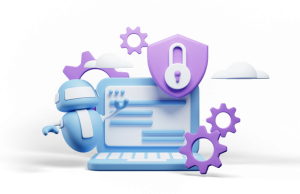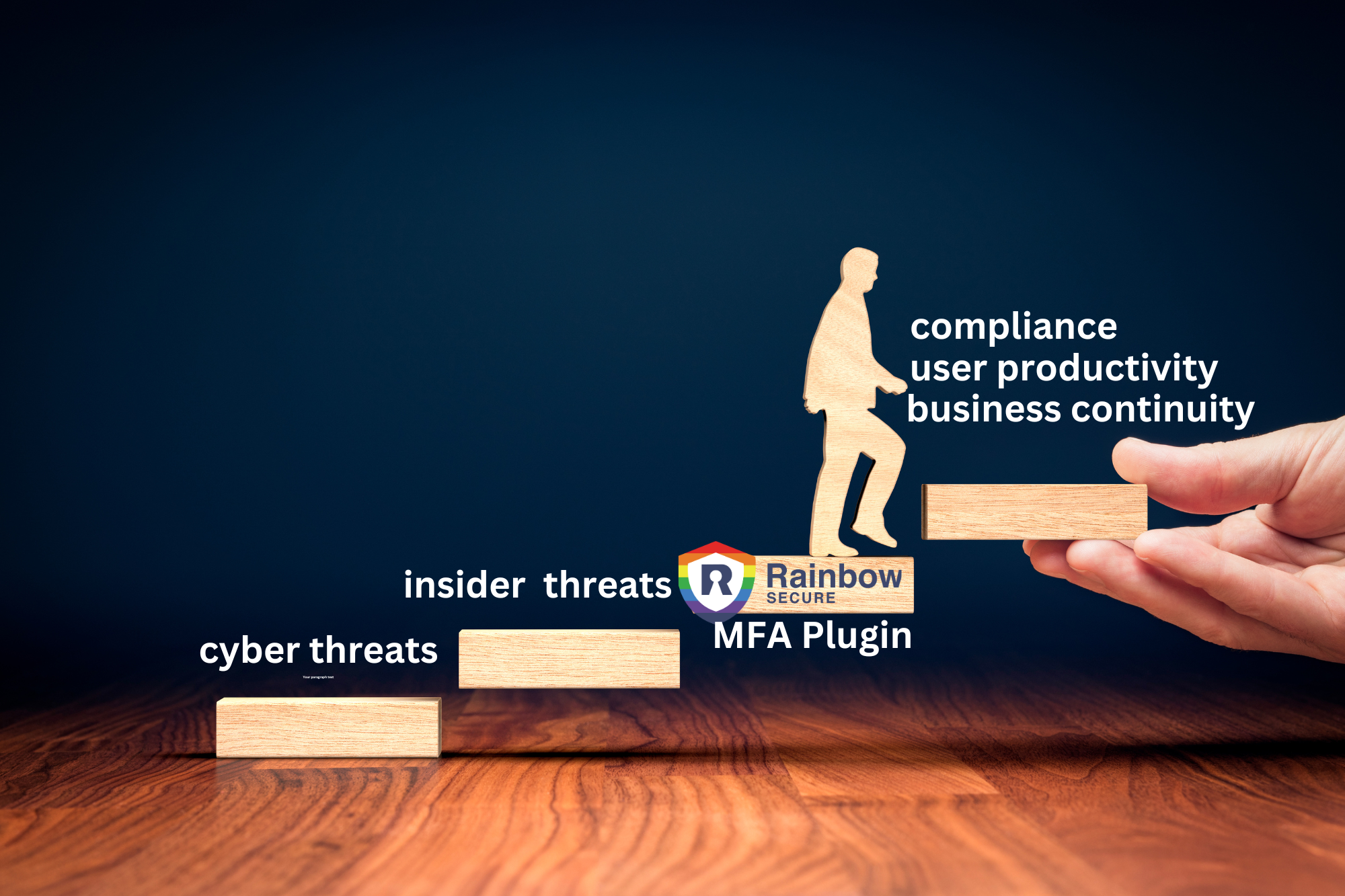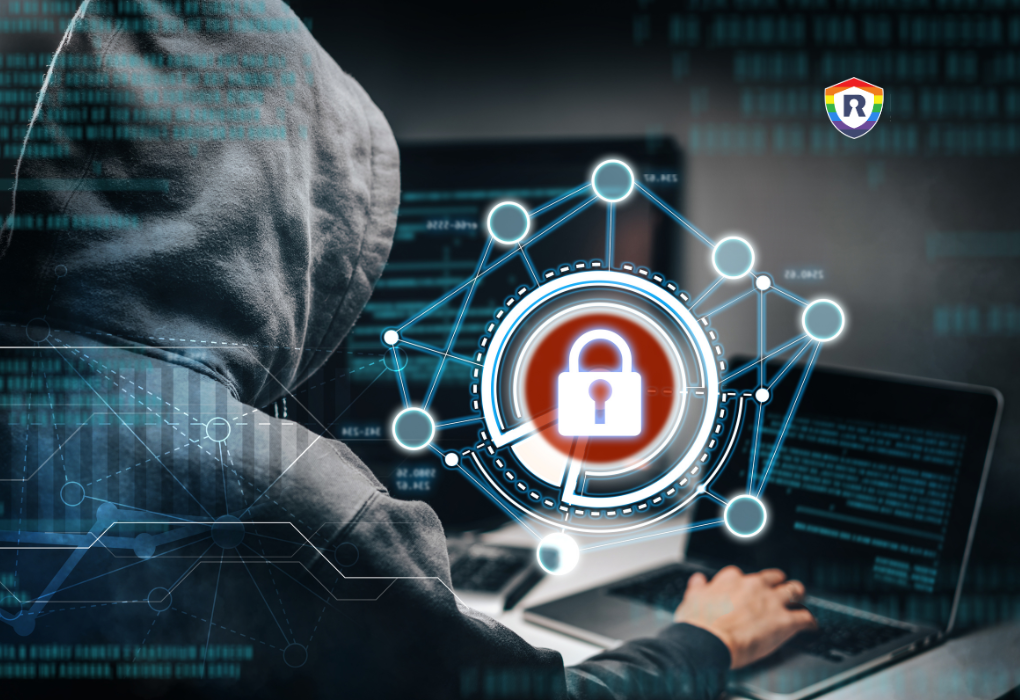The concept of cyber resilience unites business continuity, information systems security, and organizational resilience. Simply put, it measures the ability to achieve desired results despite facing challenging cyber events like natural disasters, cyberattacks, or economic downturns. The level of information security proficiency and resilience directly correlates to an organization’s ability to maintain seamless business operations with minimal downtime.
In this article, you will read about:
The Importance of a Cyber Resilience Strategy
Understanding Cyber Resilience through the ITIL Service Lifecycle
Key Elements of Cyber Resilience for Businesses
The Importance of a Cyber Resilience Strategy
How cyber resilience benefits business?
Some Ways to Improve Your Organization’s Cybersecurity Preparedness
How Rainbow Secure can help?
Having a cyber resilience strategy is critical for business continuity. Not only does it improve an enterprise’s security posture and decrease the risk of exposure to its critical infrastructure, but it also offers other benefits. Cyber resilience can help mitigate financial loss and reduce reputational harm. Additionally, obtaining cyber resilience certification can foster trust with clients and customers. A cyber-resilient company can also enhance its value proposition by creating a competitive edge through effective and efficient operations.
- Mitigating Financial Loss
Financial loss can lead to a lack of confidence from stakeholders such as shareholders, investors, employees, and customers. According to the 2020 Cyber Resilient Organization Report by IBM Security™, over 50% of organizations experienced a cybersecurity incident that significantly disrupted information technology (IT) and business processes. The average cost of a data breach is $4.35 million, according to Ponemon’s 2022 Cost of a Breach Study.
- Gaining Customer Trust and Business
To attract customers and gain their business, some organizations comply with international management standards, such as ISO/IEC 27001 provided by the International Organization for Standardization. This standard provides conditions for an information security management system (ISMS) to manage asset security, including employee details, financial information, intellectual property, or third-party entrusted information. In the US, companies may seek certification with the Payment Card Industry Data Security Standard (PCI-DSS), which is a requirement for processing payments such as credit cards. There are other compliance requirements as per the nature of industry.
- Increasing Competitive Advantage
Organizations with cyber resilience have a competitive edge over those without it. Companies that follow best practices, such as the Information Technology Infrastructure Library (ITIL), create effective operations. Similarly, developing a cyber resilience management system also enhances an organization’s value proposition and creates value for customers.
Understanding Cyber Resilience through the ITIL Service Lifecycle
Cyber resilience can be broken down into a lifecycle consisting of five stages, based on the ITIL service lifecycle. These stages are:
- Strategy
- Design
- Transition
- Operation
- Improvement
- Cyber Resilience Strategy
The strategy stage identifies critical assets, such as information, systems, and services that are most important to the organization and its stakeholders. It also involves identifying vulnerabilities and the risks that these assets face.
- Cyber Resilience Design
During the design stage, the appropriate and proportionate controls, procedures, and training are selected to prevent harm to critical assets. This stage also identifies who has the authority to make decisions and take action.
- Cyber Resilience Transition
The transition stage tests controls and refines incident detection to identify when critical assets are under stress from internal, external, intentional, or accidental action.
- Cyber Resilience Operation
In the operation stage, cyber events and incidents are detected, managed, and controlled. Continual control testing is done to ensure effectiveness, efficiency, and consistency.
- Cyber Resilience Evolution
The evolution stage continually protects an ever-changing environment. Organizations must learn from their experiences and modify their procedures, training, design, and strategy to recover from incidents.
Key Elements of Cyber Resilience for Businesses
To ensure your business is cyber-resilient, it’s important to consider the following components:
- Cyber Security: Methods to prevent, detect, and respond to cyber-attacks using tools like antivirus software, firewalls, and employee training.
- Risk Assessment: Regularly identifying potential cyber risks and developing a plan to mitigate them.
- Security Management: Establishing and monitoring security policies and practices, including strong password protection for user accounts and cyber security awareness training for staff.
- Incident Response: Creating a plan that outlines procedures for assessing and addressing security incidents, including who to contact, how to contain the incident, and how to communicate with affected parties.
- Business Continuity: Establishing a plan to ensure business operations can continue during cyber-attacks or other disruptions. This includes implementing backup systems and communication protocols to manage disruptions.
How cyber resilience benefits business?
Here are some ways whereby having cyber resilience can benefit businesses:
- Safeguarding Against Cyber Attacks
When businesses implement effective cyber resilience measures, they can protect themselves against data breaches, malware attacks, and other malicious activities. Cyber resilience enables faster detection and response to threats, reducing the risk of attackers accessing sensitive information. It also helps businesses to quickly and effectively detect and address data breaches.
2. Ensuring Business Continuity
Businesses need to maintain operations following a cyber- attack. Cyber resilience helps ensure that crucial services remain functional during any disruption, reducing downtime and keeping the business operational.
3. Building Customer Confidence and Trust
Customers want to be confident that their data is secure and that they can trust the companies they interact with. Cyber resilience can help build trust and confidence by safeguarding customers’ data and assuring them that their information is secure. This can foster increased customer loyalty over time.
Some Ways to Improve Your Organization’s Cybersecurity Preparedness
Assessing your organization’s cybersecurity readiness can be a daunting task. A Ponemon survey revealed that almost half of all organizations have not assessed their incident response teams’ readiness. Rather than addressing one issue at a time, which can be unsustainable, organizations should adopt a multi-pronged approach that both reduces their attack surface and strengthens their cyber defenses. This means taking proactive measures and services to minimize the likelihood of a cyber- attack.
To achieve better cybersecurity preparedness, consider the following:
- Test Your Defenses: Cyber-criminals are always testing your defenses, so you should also test them. These proactive measures include tabletop exercises, red team and penetration test exercises, threat intelligence to gather information on threats and vulnerabilities, and regular employee training.
- Test Your Incident Response Team: Having an incident response and digital forensics team to help manage and implement your company’s cybersecurity strategy is invaluable. This team will contain, investigate, respond, and report cybersecurity incidents. Assessing your incident response team’s capabilities is critical to identify gaps or weaknesses and improve its response and overall readiness. Key areas to assess include incident detection and identification, containment and eradication, recovery and restoration, and post-incident analysis and reporting. Breaches at organizations with incident response teams that regularly test their plan saw $2.66m in savings compared to those without IR teams or testing of the IR plan.
- Obtain Cyber Insurance: Cyber insurance is not just a reactive measure. Obtaining it in advance is a proactive measure that can provide financial resources to cover legal fees, data recovery, and other breach-related expenses. Cyber insurance can also connect policyholders with service providers who guide them through the incident and recovery process.
- Secure Your Environment: Knowing that your organization is prepared for a cyber incident can help you sleep better at night. With the right plan in place, you can take immediate action, prevent future loss, and quickly recover critical data.
- Embrace the vulnerability of hybrid work and build resilience : Partnering with cloud experts can help organizations navigate common administrator errors, such as misconfiguration and inconsistent implementation of security policies.
- Limit the impact of ransomware attacks: Organizations can limit the damage of ransomware attacks by forcing attackers to work harder to gain access to multiple business-critical systems. Zero-trust principles like least-privilege access are especially effective at preventing attacks from traveling across networks and discovering valuable data, as well as addressing human-operated ransomware.
- Elevate cybersecurity into a strategic business function: A strong security posture should focus on building awareness of the threat landscape and establishing resilience, not on preventing individual attacks. CISOs agree: 98% of survey respondents who reported feeling extremely vulnerable to attack were implementing zero trust, and 78% already had a comprehensive zero-trust strategy in place.
- Maximize your existing resources: Organizations can advance their cybersecurity maturity by ensuring the comprehensive implementation of security tools. Building on a strong zero-trust foundation, organizations can optimize their existing security investments like endpoint detection and response, email security, identity and access management, cloud access security broker, and built-in threat protection tools.
- Implement security fundamentals: Basic security hygiene still protects against 98% of attacks, according to the Microsoft Digital Defense Report. Prioritizing foundational cyber best practices is key, including enabling multifactor authentication (MFA), applying least privilege access, updating software, installing anti-malware, and protecting data.
- Employee engagement: To safeguard your organisation’s data, it is critical that every employee understands the significance of cyber resilience and their role in protecting it. This involves developing a deeper understanding of identifying and responding to potential threats while following best practices for data security. Employers must provide incentives that encourage employees to embrace cybersecurity strategies. This could include making it part of their job responsibilities, offering rewards or bonuses for successful implementation of security measures, or providing feedback on their efforts. Regular reviews should also be conducted to ensure employees stay informed about new industry developments and continue to follow best practices. In essence, employee engagement is an integral part of any cyber resilience strategy.
In today’s world, cyber resilience is vital for safeguarding a company’s data and operations. By implementing a secure and resilient system, businesses can anticipate potential threats and rebound quickly from cyber-attacks.
The advantages of cyber resilience are substantial and provide peace of mind for businesses knowing they are well-protected. As the digital landscape continues to evolve, the need for cyber resilience will only increase.
How can Rainbow Secure help?
Right amount of data and system access to right person or role at right time is the key to organizations being able to use digital tools and platforms to serve the customer base and stay compliant.
Next Generation Rainbow Secure platform is a modern identity authentication (MFA) and single sign- on (SSO) solution for your business across on-premises and cloud environments. It’s backed by an experienced team of cloud and security experts, years of innovation, and partnerships with leading cloud platforms. Rainbow Secure is a Leader in Smart and Secure Digital Solutions that work for you.
Insider Threats: Rainbow Secure assists in mitigating insider threats by implementing access controls, user monitoring, and privilege management solutions. Also, if the user leaves behind unlocked devices, saved passwords in the password manager or browser can be misused by malicious insiders. Interactive login security from Rainbow Secure helps prevents unauthorized access and protects against data theft or misuse by privileged users.
ChatGPT Security for business: Secure your ChatGPT login and Data with Rainbow Secure MFA Plugin.
Secure AI Integration: Consult Rainbow Secure Team to integrate AI in your business workflows powered by Azure and Rainbow Secure API.
Secure Workforce & Customer login: Use Authentication Plug-in by Rainbow Secure to secure workforce and customer logins. In this plug-in, you get a multi-dimensional password, passwordless login solutions with AI monitoring, Risk Analytics, and location fencing.
IoT Friendly Security: IoT platform developers can secure their cloud endpoints, and user logins (both admin and customer) against unauthorized access and scripted malware attacks using easy to adapt and support multi-layer interactive rainbow secure authentication solutions and services that includes but not limited to security assessment, API Security, secure user onboarding, and risk analytics.
Secure Data and its Backups: We provide Cloud based data vault and data archive solutions backed by Microsoft Azure and secured by our authentication plugin and industry best practices to give you ransomware protection, help with data governance and disaster mitigation.
Database Security: We provide technical consulting services to Secure Databases in cloud and on premise. You get best protection for your data in databases using native and third-party security tools.
Meet Compliance Requirements: Use Authentication Plug-in by Rainbow Secure with your business application and in SSO (Single Sign-on) and meet industry standards and compliance regulations such as NIST, ISO, FTC, SOX, SOC2, CMMC, CMMI, HIPAA, PCI, and others.
Securely communicate and Collaborate: Use Secure Business Email by Rainbow Secure and get protection against account takeover, phishing, ransomware, and automated login cyber frauds. In this email, you get options to send encrypted emails, single sign-on with Office 365, and Google, and 1 TB one drive storage.
Connect Business applications: Get one unified login using Rainbow Secure Single Sign-On
Manage User Onboarding / Offboarding using Rainbow Secure IAM
Verify User using Smart Multi-factor MFA: Smart Multi-Factor Authentication from Rainbow Secure which adjusts to your use case, reduces the cyber liabilities of a business from stolen credentials and improves productivity, and enhances user experience.
Do you have more questions about how Rainbow Secure’s innovative modern identity authentication (MFA) and single sign- on (SSO) solutions safeguard your business and enhance user productivity for your business across on-premises and cloud environments? Contact us today. Email us at Hello@rainbowsecure.com






